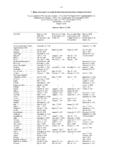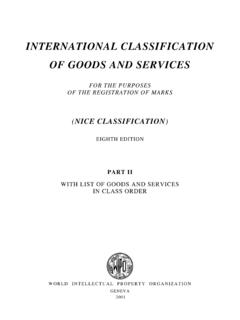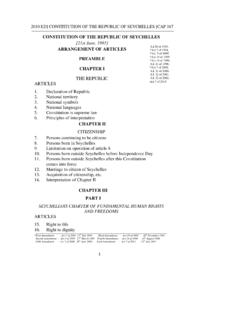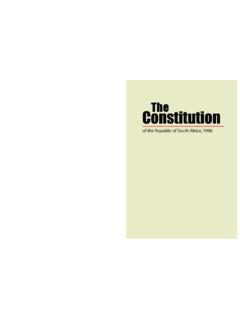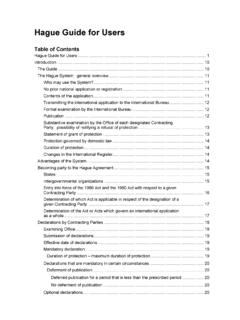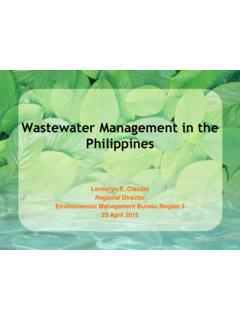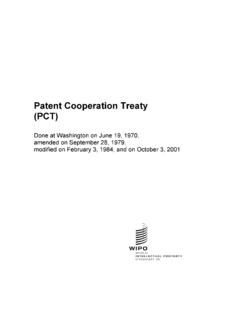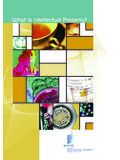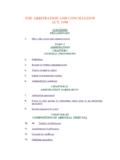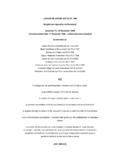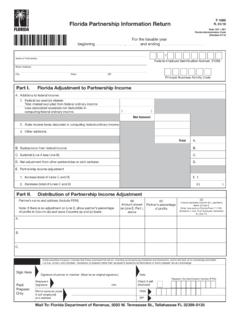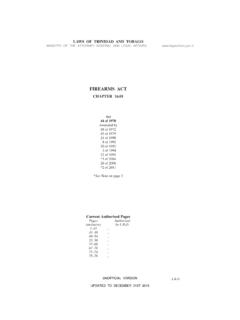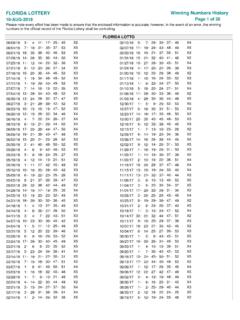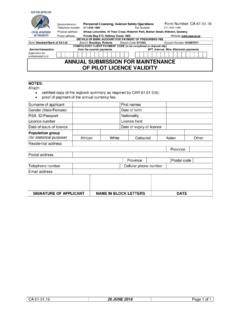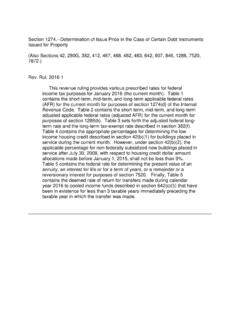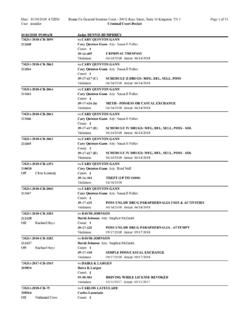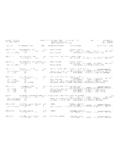Transcription of ST.16 - Recommended standard code for the identification ...
1 HANDBOOK ON INDUSTRIAL PROPERTY INFORMATION AND DOCUMENTATION Ref.: standards page: en / 03-16-01 Date : October 2016 standard Recommended standard code FOR THE identification OF DIFFERENT KINDS OF PATENT DOCUMENTS Revision adopted by the PCIPI Executive Coordination Committee at its twentieth session on May 30, 1997 INTRODUCTION 1. This Recommended standard provides for groups of letter codes in order to distinguish patent documents published by industrial property offices. The letter codes also facilitate the storage and retrieval of such documents. SCOPE AND FIELD OF APPLICATION 2. The Recommended standard provides for letter codes for patent documents, as well as for documents derived from or relating to patent applications.
2 It also provides for a letter code for non-patent literature documents (N) and for documents to be restricted to the internal use of industrial property offices (X) ( , confidential documents, not to be disclosed outside the office). 3. It is Recommended that the letter code : (i) be used for the recording of the kind of document in machine-readable data carriers, such as optical discs, magnetic tapes, aperture cards, 80-column punched cards, etc.; (ii) be used on the first page of patent documents, associated with and following the document number, if these have been published in the sense of paragraph 6; (iii) be used in entries in patent gazettes or, if all entries in a section of a gazette relate to the same kind of document at the beginning of such a section; (iv) be used for the identification of patent documents cited in Search Reports and Lists of References in patent documents (INID code (56)).
3 DEFINITIONS 4. For the purposes of this Recommended standard , the expression patent document(s) includes the following documents: patents for invention, inventors certificates, medicament patents, plant patents, design patents, utility certificates, utility models, patents or certificates of addition, utility certificates of addition, and published applications therefor. 5. For the purposes of this Recommended standard , the term entry in a patent gazette means at least one comprehensive announcement in a patent gazette regarding the making available to the public of the complete text, claims (if any) and drawings (if any) of a patent document.
4 6. For the purposes of this Recommended standard , the terms publication and published are used in the sense of making available (i) a patent document to the public for inspection or supplying a copy on request; (ii) multiple copies of a patent document produced on, or by, any medium ( , paper, film, magnetic tape or disc, optical disc, online database, computer network, etc.). HANDBOOK ON INDUSTRIAL PROPERTY INFORMATION AND DOCUMENTATION Ref.: standards page: en / 03-16-01 Date : October 2016 Explanation: If, at a particular procedural stage, a copy of the document is first made available to the public for inspection or copying and is then, at the same procedural stage, made available in multiple copies produced on, or by, any medium, only a single publication is considered to have been produced.
5 If, on the other hand, multiple reproduction results from a new procedural stage, this reproduction is considered to be a further publication of the document, even if the texts at the two stages are identical. 7. According to certain national industrial property laws or regulations or regional or international industrial property conventions or treaties, the same patent application may be published at various procedural stages. For the purpose of this Recommended standard , a publication level is defined as the level corresponding to a procedural stage at which normally a document is published under a given national industrial property law or under a regional or international industrial property convention or treaty.
6 LETTER CODES AND NUMERICAL CODES 8. The appropriate letter codes should be applied to the national phase publications irrespective of any earlier publication level in the international phase, unless the latter can be considered to have taken the place of a national publication as provided for in paragraph 7, above. 9. A one-digit numerical code following the letter code is to supplement, if necessary, the information contained in a letter code . The numerical code must always be interpreted in conjunction with the two-letter code under WIPO standard and the above-mentioned letter code . 10. The use or non-use of the digits of the range 1 to 7 may be decided by each industrial property office according to its needs.
7 The meaning of these digits should then be defined by each industrial property office availing itself of this option. Digit 0 is used by some industrial property offices in connection with the letter code for internal purposes, outside the scope of this Recommended standard . Industrial property offices are Recommended to apply, at any publication level and corresponding to the letter code of the original document: digit 8 to announce a correction relating to bibliographic data, text parts, drawings or chemical formulae appearing on the first page of the patent document and resulting in a reprint of the first page; digit 9 to announce a correction relating to any part of the patent document which correction resulted in a partial or complete reprint of the document.
8 11. The above-mentioned letter code is subdivided into mutually exclusive groups of letters. The groups characterize patent documents (including those relating to national applications derived from international or regional applications) and documents specified in paragraph 2, above. Group 1 Use for documents resulting from a patent application and being identified as the primary or major series (excluding the utility model documents of Group 2 and the special series of patent documents as specified in Group 3, below) A First publication level B Second publication level C Third publication level Group 2 Use for utility model documents having a numbering series other than the documents of Group 1 U First publication level Y Second publication level Z Third publication level HANDBOOK ON INDUSTRIAL PROPERTY INFORMATION AND DOCUMENTATION Ref.
9 : standards page: en / 03-16-01 Date : October 2016 Group 3 Use for special series of patent documents as specified below: M Medicament patent documents ( , documents previously published by FR) P Plant patent documents ( , published by US) S Design patent documents ( , published by US) Group 4 Use for special types of patent documents or documents derived from/relating to patent applications and not covered by Groups 1 to 3, above, as specified below: L Documents, not covered by the letter code W, relating to patent documents and containing bibliographic information and only the text of an abstract and/or claim(s) and, where appropriate, a drawing R Separately published search reports T Publication, for information or other purposes, of the translation of the whole or part of a patent document already published by another office or organization W Documents relating to utility model documents falling in Group 2 and containing bibliographic information and only the text of an abstract and/or claim(s)
10 And, where appropriate, a drawing Group 5 Use for series of patent documents not covered by Groups 1 to 4, above E First publication level F Second publication level G Third publication level Group 6 Use for series of patent documents or documents derived from/relating to patent applications and not covered by Groups 1 to 5, above, according to the special requirements of each industrial property office H I Group 7 Other (see paragraph 2, above) N Non-patent literature documents X Documents restricted to the internal use of industrial property offices. 12. Part "Examples and Kinds of Patent Documents" provides, in the first document (Part ), examples of patent documents, previously and currently published, or intended to be published, listed according to code .
